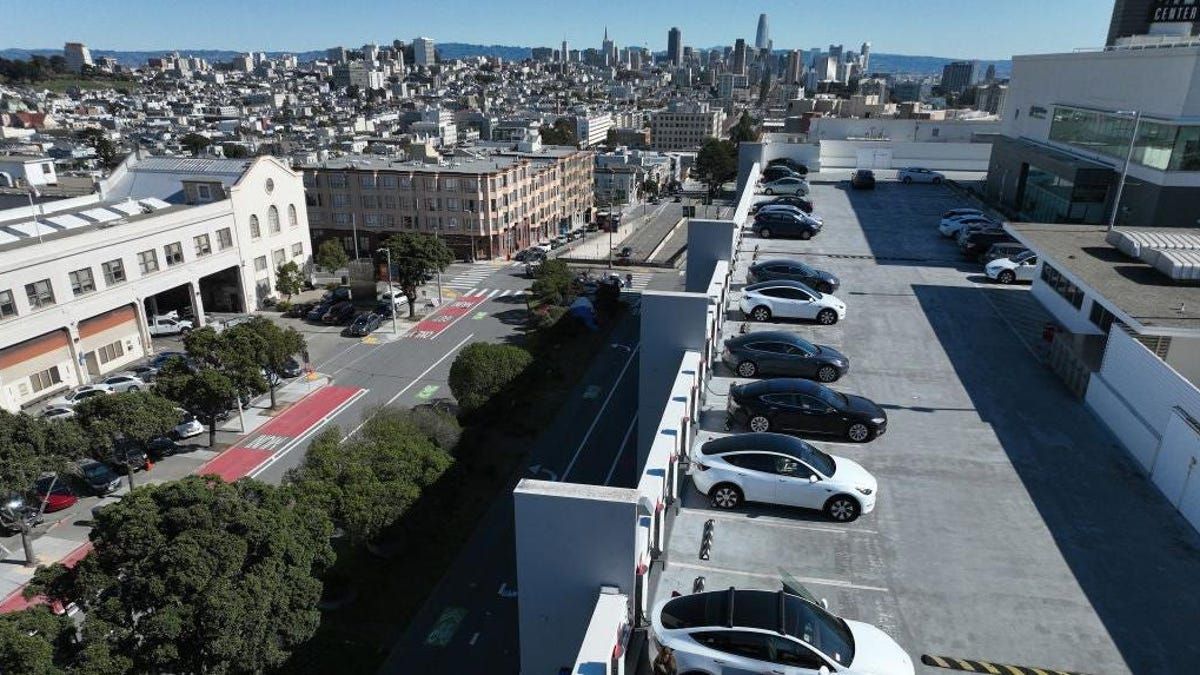EVs Are Clearing the Air in California, but Only for Rich Neighborhoods
E lectric vehicles are a popular pollution reduction strategy, but vulnerable communities are being left behind. A new study published in PLOS Climate analyzed California’s electric vehicle rebate program and found that EVs are indeed reducing pollution— but only for already affluent areas.
The r esearchers analyzed data from California’s Clean Vehicle Rebate Project from 2010 to 2021. They mapped the geographic distribution of more than 400,000 rebates issued for electric vehicles through the program during those years. They also modeled carbon dioxide, sulfur dioxide, and nitrogen oxide emissions and PM 2.5 emissions in those Census tracts. Overall net emissions related to vehicle tailpipes did go down with more EVs on the road, but wealthier areas reaped most of those benefits. Those areas saw much higher air pollution reductions compared to disadvantaged communities.
Advertisement
Researchers also found that PM2.5 pollution increased in 17% of the disadvantaged areas studied. This is because poorer Californias are more likely t o live near fossil fuel infrastructure. Communities that are identified as acutely disadvantaged only account for about a quarter of the state, but those areas “contain 50% of California natural gas power plants,” the study noted . They’re also more likely to live in high traffic areas and are therefore exposed to pollution that comes from tires , including PM 2.5.
A s more electric vehicles require charging, demand on the grid increases. Though some of the state’s grid is powered by renewable energy, natural gas-fired plants powered 42% of California’s electricity generation in 2022, according to the Energy Information Administration. “[EVs] are only as clean as the underlying electric grid from which their electricity is sourced,” Jaye Mejía-Duwan, study author and PhD candidate at UC Berkeley , told Earther.
Another reason for the unequal distribution of pollution comes from the lower rate of EV usage in the disadvantaged communities. According to the study, disadvantaged communities only received about 7% of rebates through the state program. And though California has increased incentives by thousands of dollars, residents in disadvantaged communities can’t easily afford a new car. “You have to pay full price for the vehicle upfront, and then submit an application and then only after a couple months is when you’ll get some of the money back,” Mejía-Duwan said.
Chargers are also less likely to be found in rural and lower income communities, making EVs even more inaccessible, CalMatters reported. Mejía-Duwan wants future research to look at the full lifecycle of electric vehicles and further calculate how their manufacturing can also lead to environmental concerns.
Advertisement
“This study looked at the direct emissions and does not account for the emissions involved in producing or distributing electric vehicles,” they said. “Batteries have been noted to pose a lot of serious environmental, labor, and human rights issues regarding their production. And so a complete lifecycle analysis of electric vehicles could shed more light on the overall inequalities.”
Want more climate and environment stories? Check out Earther’s guides to decarbonizing your home, divesting from fossil fuels, packing a disaster go bag, and overcoming climate dread. And don’t miss our coverage of the latest IPCC climate report, the future of carbon dioxide removal, and the un-greenwashed facts on bioplastics and plastic recycling.
Source: Gizmodo


